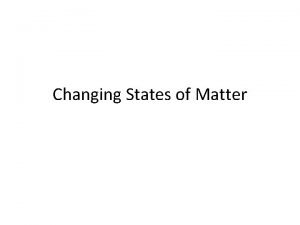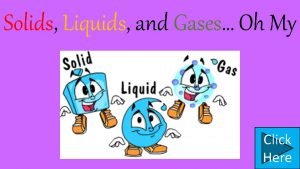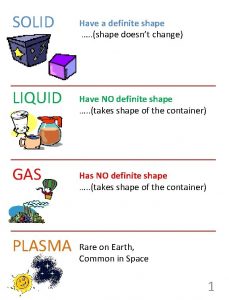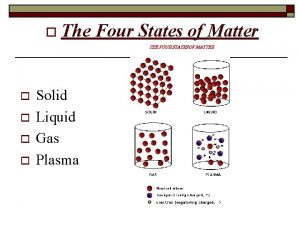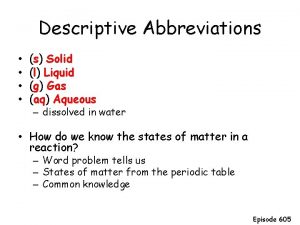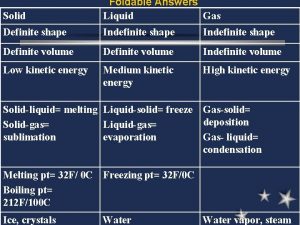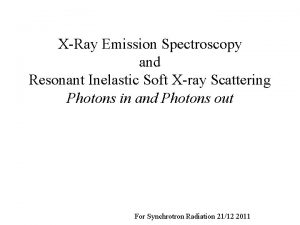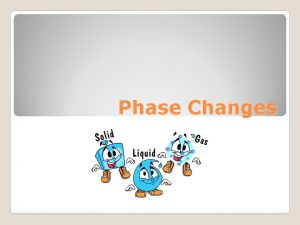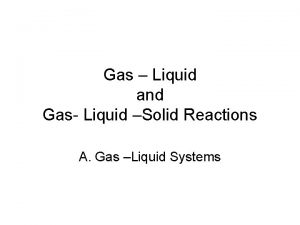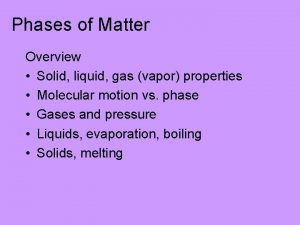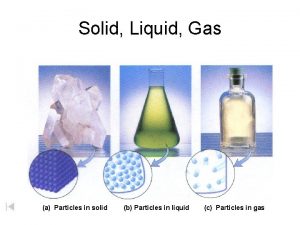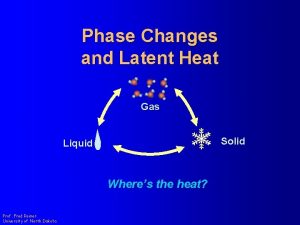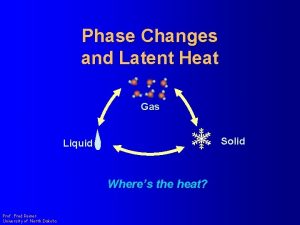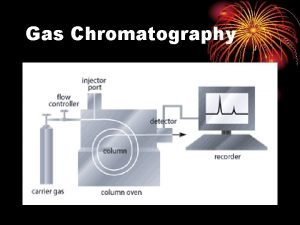Lecture 48 Phase Transition Phases gas liquid solid















- Slides: 15

Lecture 48 Phase Transition • Phases: gas, liquid, solid • Phases transition • Phase diagram • Clausius-Clapeyron equation

State of matter • 2

Solid • In a solid the particles (ions, atoms or molecules) are closely packed together. • The forces between particles are strong so that the particles cannot move freely but can only vibrate. • A solid has a stable, definite shape, and a definite volume. • Solids can only change their shape by force, as when broken or cut. 3

Liquid • A liquid is a nearly incompressible fluid that conforms to the shape of its container but retains a (nearly) constant volume independent of pressure. • The volume is definite if the temperature and pressure are constant. • Intermolecular (or interatomic or interionic) forces are still important, but the molecules have enough energy to move relative to each other and the structure is mobile. • This means that the shape of a liquid is not definite but is determined by its container. 4

Gas • A gas is a compressible fluid. Not only will a gas conform to the shape of its container but it will also expand to fill the container. • In a gas, the molecules have enough kinetic energy so that the effect of intermolecular forces is small (or zero for an ideal gas), and the typical distance between neighboring molecules is much greater than the molecular size. • A gas has no definite shape or volume, but occupies the entire container in which it is confined. 5

Plasma • Like a gas, plasma does not have definite shape or volume. • Unlike gases, plasmas are electrically conductive, produce magnetic fields and electric currents, and respond strongly to electromagnetic forces. • Positively charged nuclei swim in a "sea" of freelymoving disassociated electrons, similar to the way such charges exist in conductive metal. 6

Phase transition • A phase transition is the transformation of a thermodynamic system from one phase or state of matter to another one by heat transfer. 7

Phase diagram • A phase diagram is a type of chart used to show conditions at which thermodynamically distinct phases can occur at equilibrium. A typical phase diagram. The dotted green line gives the anomalous behavior of water. 8

Pressure–temperature phase diagram of water 9

Latent heat • 10

11

• Liquid Vapor L-V Vapor 12


Clausius-Clapeyron equation • 14

 Solid liquid gas phase change
Solid liquid gas phase change Phase change concept map solid liquid gas
Phase change concept map solid liquid gas States of matter concept map
States of matter concept map Brainpop jr solid liquid gas
Brainpop jr solid liquid gas Solid liquid gas plasma
Solid liquid gas plasma Solid to gas
Solid to gas Venn diagram of states of matter
Venn diagram of states of matter How do plasma particles move
How do plasma particles move Properties of solid, liquid and gas
Properties of solid, liquid and gas What state of matter is pepsi
What state of matter is pepsi Abbreviation for solid in chemistry
Abbreviation for solid in chemistry Why is gas easy to compress
Why is gas easy to compress Process of liquid to gas
Process of liquid to gas Solid definite or indefinite
Solid definite or indefinite Mixture graphic organizer
Mixture graphic organizer Gas liquid solid
Gas liquid solid

